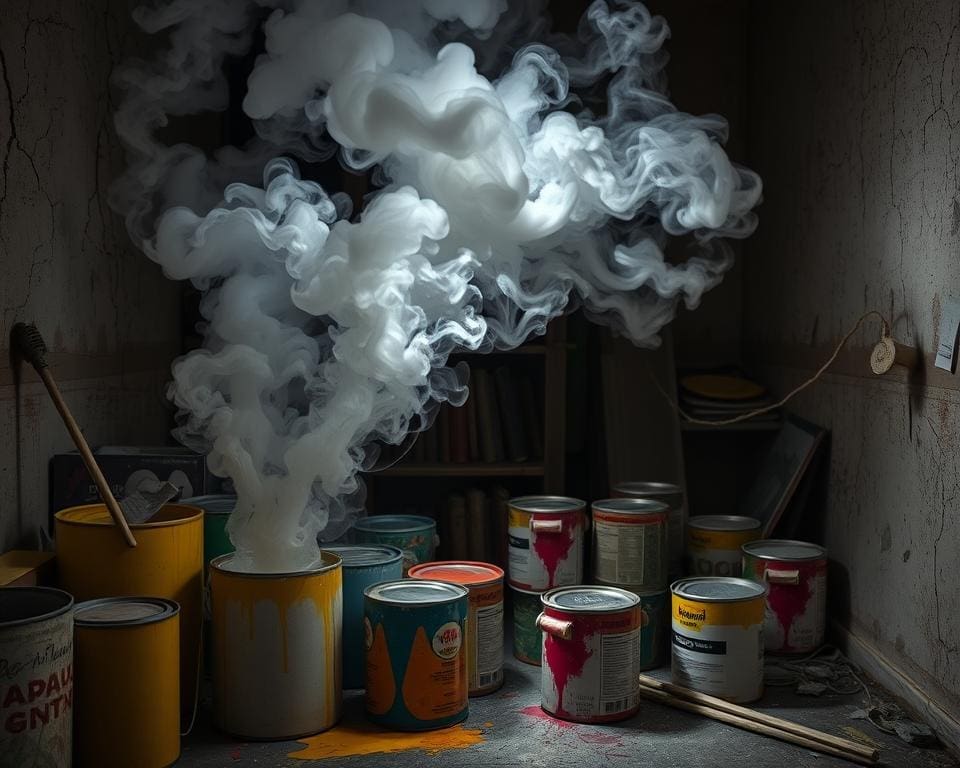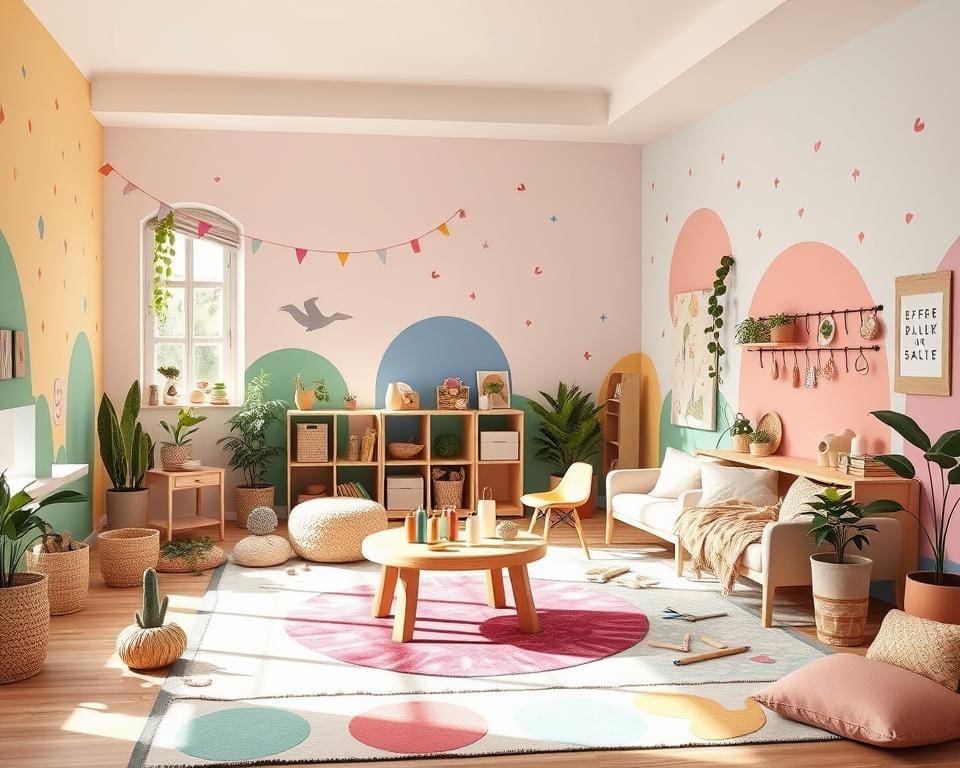Creating vibrant environments for children requires careful consideration of the materials used, particularly when it comes to paint. Non-Toxic Paints for Child-Friendly Spaces are not merely a trend; they represent a vital shift towards prioritising the health and safety of our little ones. Awareness of the harmful chemicals commonly found in traditional paints has surged, leading to an increased demand for eco-friendly paint options that parents can trust. From children’s bedroom paint ideas that inspire creativity to safe paint for kids’ rooms free from hazardous substances, this article serves as a guide to making informed choices. It’s time to transform your child’s space into a haven that’s both beautiful and safe.
Understanding the Importance of Non-Toxic Paints
The choice of paint in children’s spaces plays a crucial role in their health and well-being. Understanding the implications of using traditional paints versus non-toxic options reveals significant insights into creating safe environments for children.
The Health Risks of Traditional Paints
Traditional paints often contain hazardous substances such as volatile organic compounds (VOCs) and lead. These chemicals pose serious health risks particularly to young children, who are more vulnerable to their harmful effects. Exposure to these toxins can result in respiratory problems, allergies, and even behavioural issues, fundamentally impacting a child’s development and quality of life. Awareness of these health risks of traditional paints is essential for parents aiming to provide a secure and healthy living space.
Benefits of Choosing Non-Toxic Options
Opting for non-toxic paints introduces a wealth of advantages. Firstly, these paints significantly enhance indoor air quality, which is vital for children’s respiratory health. Non-toxic formulations reduce allergy triggers and create a safer environment free from harmful chemicals. Furthermore, many non-toxic paints qualify as eco-friendly paint options, contributing positively to the planet’s health. By choosing these alternatives, parents not only protect their children’s health but actively engage in sustainability, paving the way for a brighter future.

Non-Toxic Paints for Child-Friendly Spaces
Creating a safe environment for children begins with the right choices, particularly when it comes to paint. Selecting non-toxic paint choices is essential for parents aiming to provide healthy spaces for their little ones. Fortunately, there is a variety of options available that combine safety with aesthetic appeal.
Overview of Non-Toxic Paint Choices
Several types of non-toxic paint choices cater to the needs of a child-friendly space. These include:
- Natural Paints: Derived from plant-based ingredients, these paints are free from harmful chemicals and provide a beautiful, organic finish.
- Low VOC Paint: Volatile Organic Compounds (VOCs) can be harmful to health. Low VOC options help reduce indoor air pollution while maintaining vibrant colours.
- Water-Based Paints: Generally safer for indoor use, water-based paints offer easy cleanup and minimal odour without compromising colour richness.
What Makes Paint Non-Toxic?
Understanding what makes paint non-toxic is crucial for conscientious consumers. Non-toxic paints are characterised by the absence of toxic substances, which can include phthalates, heavy metals, and formaldehyde. Instead, these paints incorporate safe, non-harmful ingredients. Additionally, reputable brands often provide certifications that guarantee their products meet stringent health and safety standards. Parents can confidently select kid-safe wall paint when they verify these labels and trust in the brand’s commitment to safeguarding children’s health.
Eco-Friendly Paint Options Available
Choosing eco-friendly paint options fosters a healthier environment for children while reflecting a family’s commitment to sustainability. Parents can explore a variety of sustainable brands that prioritise non-toxic ingredients without compromising quality or aesthetics.
Popular Sustainable Brands
Several brands are leading the way in offering high-quality eco-friendly paint options. Some notable names include:
- Organic Modernism – Committed to environmentally-conscious production practices, providing sophisticated choices for modern homes.
- Green Planet Paints – Specialises in creating a wide range of non-toxic paints that cater to various styles and colour preferences.
- ECOS Paints – Known for their exceptional commitment to environmental responsibility, they offer an array of paints free from harmful chemicals.
Features of Eco-Friendly Paints
When selecting eco-friendly paints, it is crucial to understand their features. Many options are designed with biodegradable components, minimising their impact on the environment. Noteworthy characteristics include:
- Low emissions – Reducing indoor air pollution contributes to a healthier living space for children.
- Natural pigments – Utilising sustainable sources ensures vibrant colours without synthetics.
- Durability – Many eco-friendly paints are engineered to last, reducing the need for frequent repainting.
Safe Paint for Kids’ Rooms: A Parent’s Guide
Creating a nurturing environment for children involves selecting the right elements, including the safe paint for kids’ rooms. Parents must understand how to choose paint that meets safety standards, and recognise the significant role colour choices play in shaping a child’s mood and behaviour.
Identifying Kid-Safe Labels and Certifications
Knowing what constitutes a safe paint for kids’ rooms begins with identifying kid-safe labels. Look for certifications such as GREENGUARD or Certified Healthy Building Materials, which signify that the paint passes rigorous testing for harmful substances. These labels serve as a guide, providing peace of mind that the paint contributes positively to indoor air quality and overall health.
Colour Choices and Mood Impacts
Colour choices significantly affect a child’s emotional landscape. Soft pastels may create a calming atmosphere, promoting relaxation, while brighter hues can energise and inspire creativity. Selecting colours that resonate with a child’s personality not only enhances the aesthetics of their room but also supports their emotional well-being. Balancing safety with psychological impact ensures a harmonious space that fosters growth and happiness.
VOC-Free Paint for Nursery Applications
The choice of paint in a nursery is crucial for the health and wellbeing of your child. Understanding VOCs, or volatile organic compounds, is fundamental for parents looking to create a safe environment. These compounds are often found in traditional paints and can evaporate into the air, posing potential health risks, particularly for vulnerable populations such as infants. Studies indicate that exposure to VOCs may lead to respiratory issues and developmental problems, making the selection of a VOC-free paint an important decision.
Understanding VOCs and Their Effects
VOCs are chemicals that can significantly affect indoor air quality and pose health risks when inhaled. In a nursery setting, where young children spend much of their time, ensuring the air is pure is paramount. Low or zero VOC options, commonly marketed as VOC-free paint, are specifically formulated to minimise these harmful emissions. By opting for products that are free from these compounds, parents can help safeguard their child’s health and promote a cleaner, safer living space.
Top Brands Offering VOC-Free Alternatives
Fortunately, numerous brands specialise in VOC-free paint, making it easier for parents to find suitable options for their nursery. Among the top brands for nursery paint are Benjamin Moore’s Natura, renowned for its commitment to eco-friendliness and quality; Behr’s Premium Plus, which offers a comprehensive range of colours without the worry of VOCs; and Clare Paint, known for its innovative formulas that prioritise both safety and style. Each of these options ensures high performance without compromising the air quality of your child’s space, allowing parents to create a beautifully painted room that is also safe.









